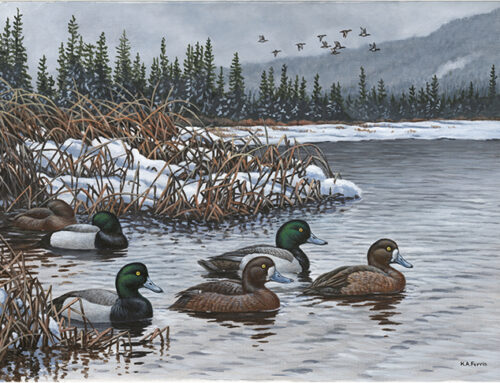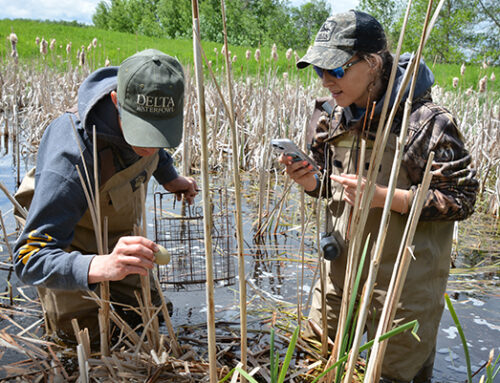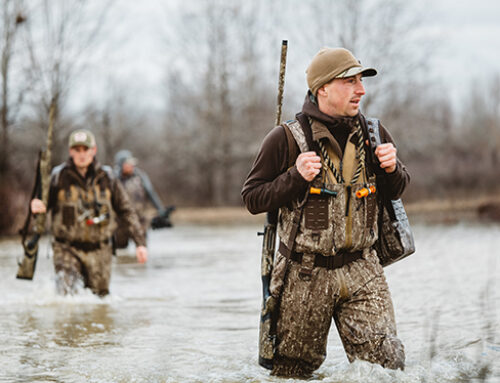Delta Waterfowl Expands Hen House Program to Record Levels to Produce More Ducks
The Duck Hunters Organization is adding more than 2,000 nest structures in key duck breeding areas this winter

By late spring, more Delta Waterfowl Hen Houses than ever before will be in place to provide safer nest sites for mallards.
Delta’s ever-growing team of 30 Hen House delivery specialists is expected to install 2,218 new nesting structures during the next couple months, while also performing annual maintenance on the existing fleet of 10,775 duck-producing houses. With the latest additions, Delta’s Hen House Program will have nearly 13,000 nest structures in place for the 2024 nesting season in key breeding areas for mallards, including Alberta, Saskatchewan, Manitoba, Ontario, North Dakota, South Dakota, Minnesota, Iowa, Pennsylvania, and Colorado.
“We’re setting another Delta program record this winter by adding 2,218 new Hen Houses,” said Matt Chouinard, waterfowl programs director for Delta Waterfowl. “It’s exciting. Our Hen House program growth is expanding duck production capacity across the U.S. and Canadian prairies.”
Delta’s Hen House program began on the Canadian prairie in 1991, when the first structures were installed on Manitoba wetlands.
Hen Houses are placed strategically, focusing on areas of the breeding that attract high densities of nesting ducks but where grassland nesting cover is relatively scarce. In some intensely farmed areas of the key prairie pothole region, predators such as raccoons, skunks, and other animals take a heavy toll on duck nests. Hen Houses put nesting hens and their eggs out of reach of would-be nest raiders, giving the ducks a much better chance to hatch a nest. Research has shown that mallard hens using a Hen House are up to 12 times more likely to hatch a nest than hens that nest in nearby grass.
“Hen Houses are a proven efficient and effective way to produce more ducks,” said Joel Brice, chief conservation officer for Delta Waterfowl. “Hen Houses fit well with farming and ranching activity, and they hatch a lot of mallards, the most popular duck among North American hunters.”
Delta’s Hen House expansion this winter includes 678 new structures in Saskatchewan, 450 in Manitoba, 400 in Alberta, 390 in South Dakota, and 300 in North Dakota. Delta received grants from North Dakota Outdoor Heritage Fund, Wildlife Habitat Canada, the Manitoba Conservation Trust, and the Manitoba Fish and Wildlife Enhancement Fund. In addition, the new structures are funded by major gifts from donors Jim Richardson and John S. Dale.
Duck production has always been at the forefront of Delta Waterfowl’s mission. In July 2022, Delta announced the Million Duck Campaign, a $250 million fundraising effort with a goal of adding 1 million ducks to the fall flight every year. At full maturity, the Million Duck Campaign will result in more than 110,000 Hen Houses welcoming hen mallards all across the breeding grounds of North America every spring.
“MDC ensures that we can continue to add impact to Delta’s programs,” Brice said. “Our goal is to dramatically scale up delivery of Delta’s Hen House program to produce more ducks and make every fall flight stronger.”
Delta Waterfowl is The Duck Hunters Organization, a leading conservation group working to produce ducks and secure the future of waterfowl hunting in North America. Visit deltawaterfowl.org.
For more information about Delta’s innovative Hen House Program, contact Matt Chouinard at mchouinard@deltawaterfowl.org or (701) 222-8857 ext. 5209.—Paul Wait






Leave A Comment